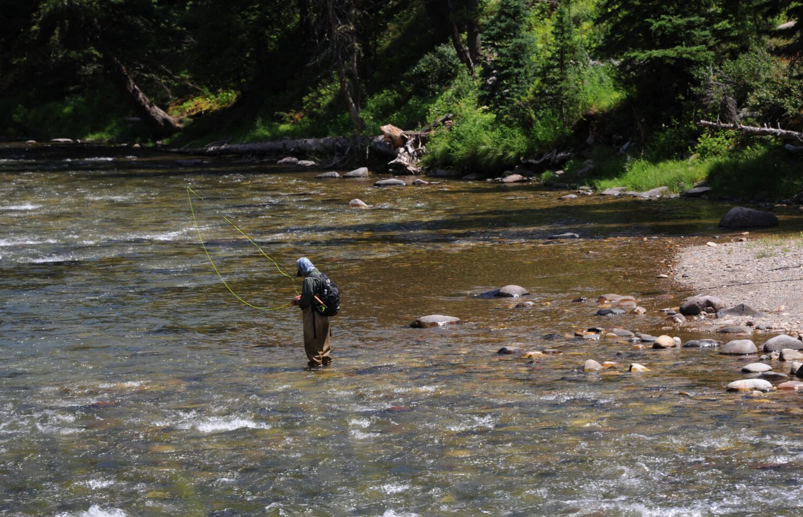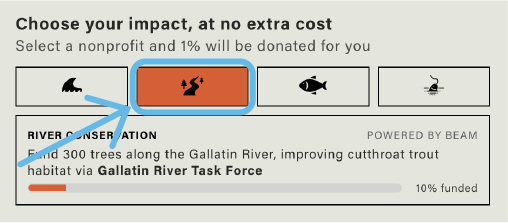Last week, the Gallatin River Task Force hosted a presentation by Montana Fish, Wildlife & Parks fisheries biologist Mike Duncan, that gave the community a closer look at the health of the upper Gallatin River. As an introduction to the annual Fly Fishing Film Tour hosted by the organization, Duncan presented a snapshot-over-time of data collected on the Gallatin and its tributaries, and insight into the relationship between the health of the fishery and the promising health of a river.
Duncan has spent the better part of the last several decades in and around the Gallatin Valley, with an official position at FWP for the past three years. While his work includes several years of collecting data on the Gallatin, he admits that unfortunately the Gallatin as a whole has been overlooked in recent years. He shared that FWP’s intent and current focus is in trying to get consistent and accurate data that show a broad picture of how the Gallatin and its trout populations are faring in the tributaries and the mainstem of the river, and further, what that means for the overall health of the Gallatin.
The presentation focused on long-term sampling on the Gallatin, as well as sampling from two years ago on the West Fork with the help of the Task Force, Trout Unlimited, and the U.S. Forest Service. Additionally, Duncan provided a look at fieldwork supporting native species conservation, and what we can expect for upcoming research and monitoring that will direct FWP’s focus on the Gallatin and its tributaries.
Historically, there have been three long-term sampling sections in the Gallatin: Porcupine, Jack Smith, and Logan—with additional sections on the East Gallatin. However, safety concerns and issues with sampling efficiency have led to FWP exploring new sections in the upper Gallatin River. The new Big Sky Section runs from Porcupine Bridge to Jack Smith Bridge and includes portions of the old Porcupine and Jack Smith sections, which helps provide some continuity to their historical sampling efforts.
However, Duncan cautions that subtle differences between the sampling reaches need to be taken into account when evaluating trends in the data. The Big Sky Section was first sampled in 2021 and will likely be visited every other year. Initial efforts revealed similar abundances and lengths of rainbow and brown trout to what was observed in the old sections since 2000. Additional sampling opportunities elsewhere in the Canyon and near the Yellowstone National Park boundary will be identified this fall.
In addition to sampling in the mainstem Gallatin, FWP continues to prioritize similar efforts in tributaries around Big Sky with the help from the Task Force, Trout Unlimited, and the U.S. Forest Service. Based on the sampling efforts on the West Fork of the Gallatin from 2021, Duncan said the West Fork appears to support the highest trout abundances of any of the tributaries sampled in the area over the past several years. Interestingly, the range and average lengths of rainbow trout captured in 2021 were nearly identical to similar efforts completed just upstream in 1960 by FWP staff, indicating a stable trout population persists in the stream.
Duncan also highlighted FWP’s native species efforts around Big Sky. Much of that work in recent years has involved restoring westslope cutthroat trout and Arctic grayling to the North Fork of Spanish Creek, which was dominated by nonnative brook and rainbow trout prior to their recent work. FWP will begin efforts this year to identify additional reintroduction opportunities for cutthroat trout elsewhere in the Gallatin and will work with the public to prioritize which streams the agency pursues those projects.
While the presentation covered an enormous amount of information that spans the Gallatin and its tributaries—collection methods, data comparisons, trends, and many research points and indicators in between—the high-level takeaways are that the trout populations in the Gallatin are faring well.
In addition, when asked about the recent appearances of algae along the Gallatin, and the reason for concern relative to activity in Big Sky, Duncan had this to say, “You see it in the news as being attributed to what is going on up here (in Big Sky), but … we have it up the Taylor Fork below Wapiti (Creek), or up Cabin Creek, between Quake and Hebgen, which spits out of wilderness, so while it is a concern, there is more to it than what is going on in Big Sky.”
While indicators of a healthy fishery and river carry nuances and aspects that span fish counts, the presentation offered a positive trend we can get behind: the trout populations of the Gallatin River are indicative of water health, and without healthy tributaries and connectivity to rivers, fish populations would be limited, something we are not yet seeing on the Gallatin.
When asked about thresholds of fishery populations that consider angling, environmental and other factors, Duncan said that he’s not seeing the same shift in size structure that raise concern in places like the lower Madison that point to increased fish mortality. In the coming years, Duncan and FWP intend to continue monitoring efforts in the upper Gallatin, taking a closer look into potential variables that might be limiting survival and growth of trout.
A full recording of Mike Duncan’s presentation can be found on the Gallatin River Task Force’s Facebook page.




